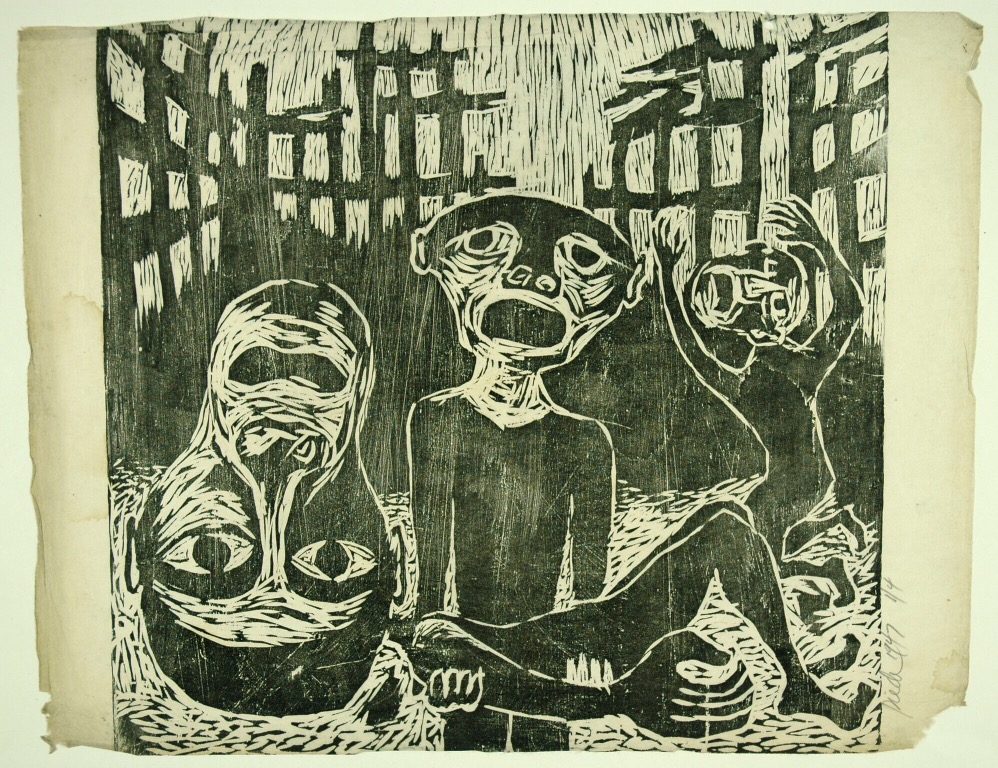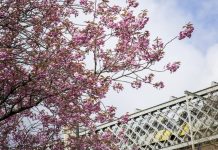A major retrospective on the career of Paul Peter Piech has opened at the People’s History Museum in Manchester (1 October 2016 to 12 February 2017). Piech’s legacy is as one of the most remarkable Printmakers of the 20th century and his journey to becoming so is one of intrigue, contrast and political boldness.
An artist, humanitarian and campaigner, Piech’s work takes on global issues, reflects the horrors of war and makes stark political comment. Set against this, Piech spent the early part of his career as an advertising man, working in the industry on highly influential and successful campaigns on both sides of the Atlantic. These distinctly different aspects of Piech feature in Dedicated to all Defenders of Human Freedoms along with his lifelong love of poetry and jazz, which were inspirational to him and his career.
Mark Wilson, Exhibitions Officer for the People’s History Museum, says, “Piech’s own support and voice for liberal causes together with his skills and artistry in printmaking make him one of the masters of the political poster, which this retrospective explores and celebrates. He was also a great observer of his time, often using the words and quotes of politicians and leading figures in his visuals. To understand his work and legacy, you need to understand the man, and through Dedicated to all Defenders of Human Freedoms we’ve set out to share Piech’s story as well as his work.”
The exhibition features pieces from the Piech family’s private collection, private collectors and the collection held at the Regional Print Centre at Coleg Cambria in Wrexham, with whom the People’s History Museum has jointly curated the exhibition. When Piech died in 1996 it was to the Regional Print Centre that his family donated an extensive portfolio of his work.
Jim Creed, Regional Print Centre Coordinator, says, “The exhibition at the People’s History Museum showcases a vast range of artworks, prints and artefacts that have never been on public display before including pieces from the Piech family archive. It also recognises the impact Piech’s work has, and his relevance and importance as a significant 20th century artist and printmaker.
“Piech used art as a means to question the world and society around him and many of the themes and ideas in the exhibition are still relevant today. The exhibition marks the 20th anniversary of his death, which I believe is a fitting tribute to his artistic achievements.”
Wales was to become Piech’s home, but it was in America in 1920 that he was born to Ukrainian parents. Whilst attending the Cooper Union School of Art in New York his studies were suspended due to the outbreak of WWII, which saw him posted to the UK where he met his future wife Irene Tomkins, who was to bring him back to Wales after the war. The married couple moved to London in the late 40s where Piech studied fine art and lithography at the Chelsea School of Art.
Between 1951 and 1968 Piech worked in advertising as an artistic director, creatively leading well-known campaigns including BP, ICI and British Steel. Simultaneously he formed his own press, Taurus Press, as a platform and expression for his political beliefs and to expand the art of typography. As well as examples of his advertising campaigns that reference this period of Piech’s life, a large display of the limited edition Artists books that he produced form part of the exhibition.
In 1968 Piech became a freelance artist and lecturer, with a focus on his printmaking, which was informed by his social and political beliefs. In addition to working for groups like CND and Amnesty International much of his work carried Piech’s own political messages; messages such as the Racism is a Poison series that are carried in the exhibition. Following his retirement in 1984 he was still producing a prolific amount of art, so that when he died in 1996 he left behind a huge body of work that is held in collections around the world.
As well as Piech’s powerful and historically important work, visitors to the People’s History Museum will discover how he developed his printmaking techniques. He began with an interest in lithography and woodcut, followed by letterpress using lead type and small carved woodblock printed images to create Artists Books as part of the Taurus Press. This later progressed to include, and be dominated by, the linocut printmaking technique that was far more attacking using separate linocut printing plates to layer text and image upon one another. Examples of the equipment and type of printing press that Piech would have used will be exhibited alongside his actual printmaking rollers, linocutting tools, and original printing plates.
Dedicated to all Defenders of Human Freedoms. The Art of Paul Peter Piech opens on 1 October until 12 February 2017 and is free entry www.phm.org.uk







